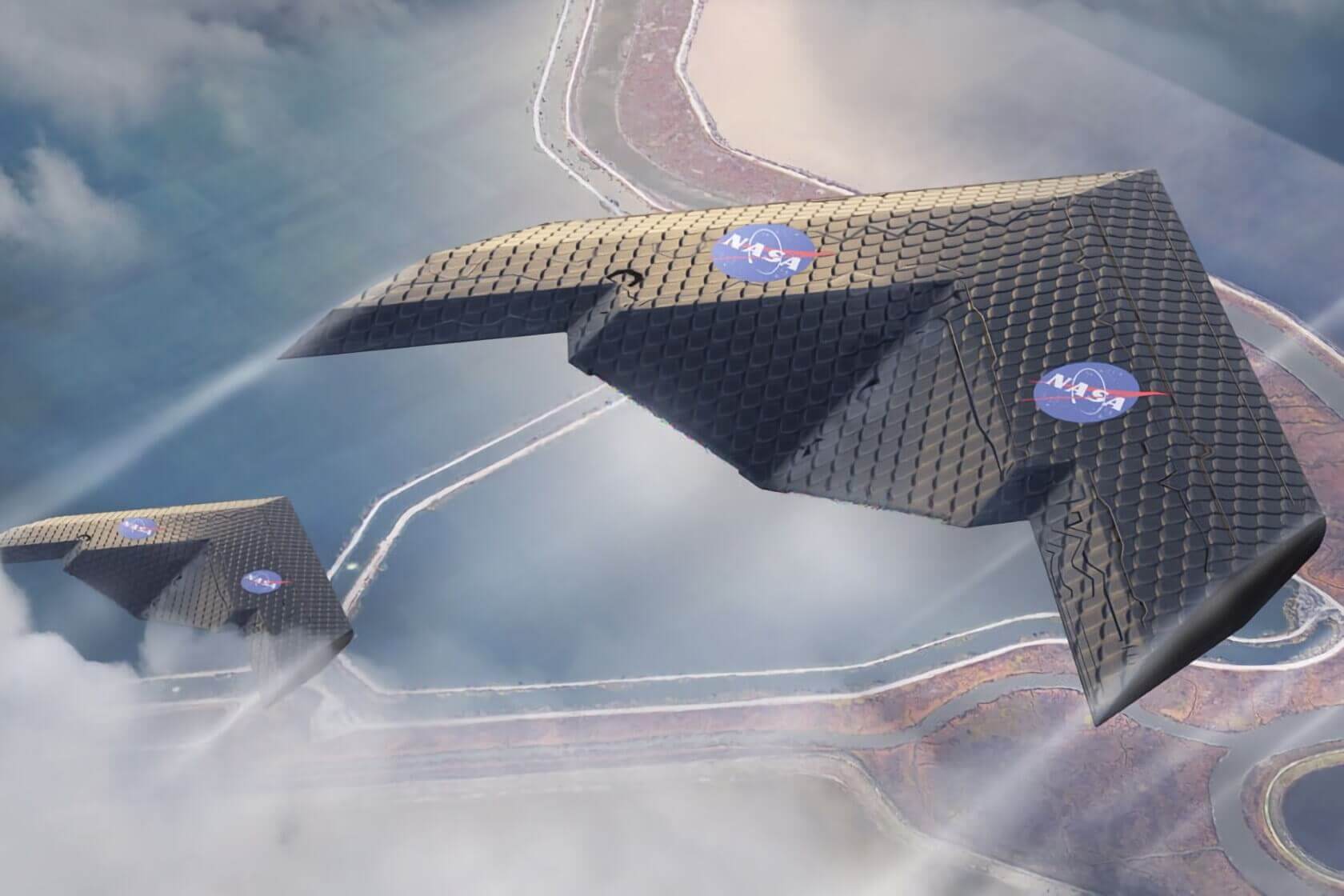While we’re trying to sandwich ourselves in airplanes that leave practically no leg room for anyone older than 10, MIT and NASA collaborated on a project for an airplane wing that can change its form mid-flight.
Normally, a plane’s wing relies on moveable surfaces that are separate from each other (such as the wing flaps) in order to help the plane move left or right but this new wing is capable of completely changing its entire body.
How?
Simple: it’s build out of thousands of small, stiff but flexible components – small triangles of ‘matchstick-like struts’. They form a lattice framework that is covered with a layer of the same or similar polymer material as the rest of the framework.
“We’re able to gain efficiency by matching the shape to the loads at different angles of attack,” research engineer Nicholas Cramer said “We’re able to produce the exact same behavior you would do actively, but we did it passively.”
MIT alumni Kenneth Cheung and a team of engineers demonstrated the basic principle of how the wing works a few years back when they showcased it on a wing that measured roughly about a meter long – the size that would normally be used on a remote-controlled model aircraft.
The new, upgraded version is about five times longer and would fit a single-seater plane. It’s also easy to manufacture: the meter-long prototype was assembled by a team of graduate students but the process can now be easily reconstructed and achieved by a team of autonomous assembly robots.
What’s also great about this wing is that it can be configured with a set of wing parameters that would fit landing, takeoff, cruising and taxiing perfectly.
Because there would be so much room left for optimizing these features, the energy costs would lower drastically, in addition to making whatever aircraft they’re placed on much easier to control than ever before.
Daniel Campbell, a structures researcher at Aurora Flight Sciences that was not involved in the research, also saw the benefits of the new wing system: “The research shows promise for reducing cost and increasing the performance for large, light weight, stiff structures,” he said “Most promising near-term applications are structural applications for airships and space-based structures, such as antennas.“
The design has already been tested by NASA in one of its wind tunnels where it ‘performed even a bit better than predicted‘, according to graduate student in MIT’s Center for Bits and Atoms, Benjamin Jenett. The engineers hope that this new approach to wing construction could offer future aircraft design and manufacturing a much greater flexibility than ever before.
Follow TechTheLead on Google News to get the news first.






















